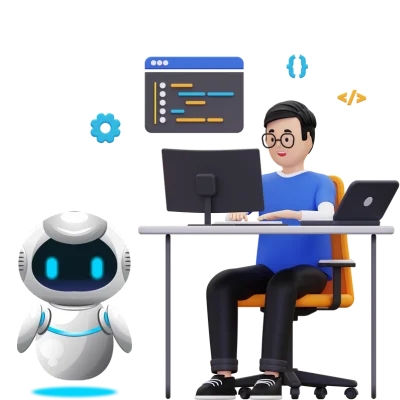Access to Vetted Talent
Save valuable time and resources by accessing a pool of candidates that have already undergone rigorous skill and background checks. Anicalls ensures that you receive profiles that align with your expectations and needs.


Providing a clear and comprehensive overview of the role's responsibilities and expectations.
Thoughtfully selecting and presenting a tailored pool of skilled candidates.
Engaging candidates in thorough discussions to understand their expertise and alignment with client needs.
Ensuring a smooth transition and effective collaboration as the consultant becomes an integral part of the client's team.
RPA developers need a blend of technical and analytical skills. While proficiency in the RPA tool of choice is essential, understanding business processes, being able to think critically, and having a solution-oriented mindset are equally important.
Anicalls RPA developers are responsible for designing, developing, and implementing RPA solutions to automate repetitive business processes using tools like UiPath, Blue Prism, or Automation Anywhere.
Work with stakeholders to understand the end-to-end process while identifying areas for improvement and automation.
Break down processes into tasks, identify any exceptions that might require human intervention, and decide how RPA can be effectively implemented.
Develop, design, and test automation workflows using RPA tools like UiPath, AA, or Blue Prism. Knowledge of specific features of each tool is essential.
Write scripts to enhance functionality and integration capabilities of RPA tools, ensuring they interact seamlessly with other systems.
Design, develop, and deploy RPA bots that perform the automation tasks. This involves training the bot, handling exceptions, and ensuring optimal performance.
Troubleshoot and debug RPA solutions to ensure their accuracy and reliability. Correct any issues that arise post-deployment.
Document the process, workflow, and development steps, ensuring that anyone in the team can understand and maintain the solution in the future.
Monitor the RPA bots and infrastructure to ensure they run as expected and make any necessary adjustments.
Continually reassess the processes being automated for improvements or refinements. This includes updating RPA scripts based on changing process.